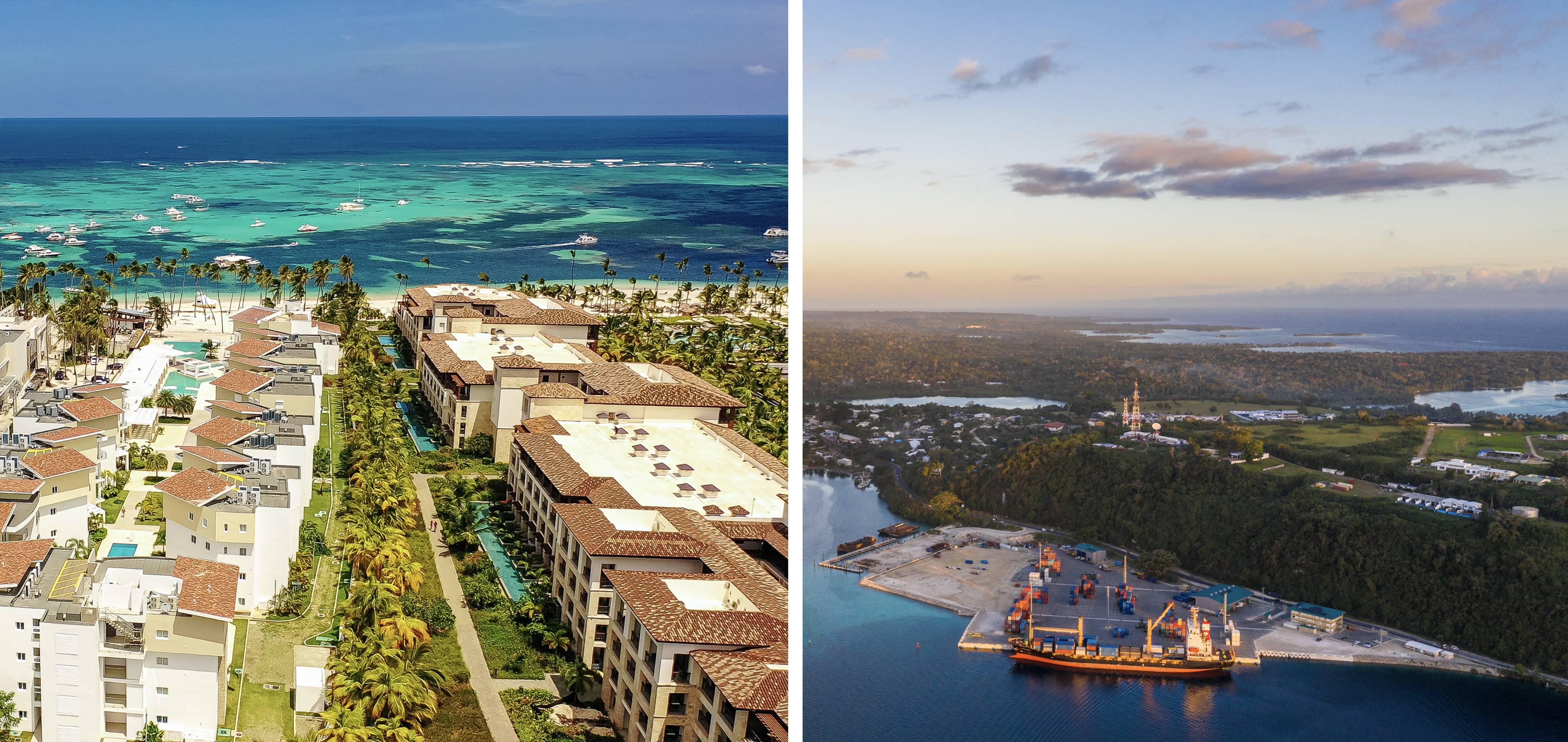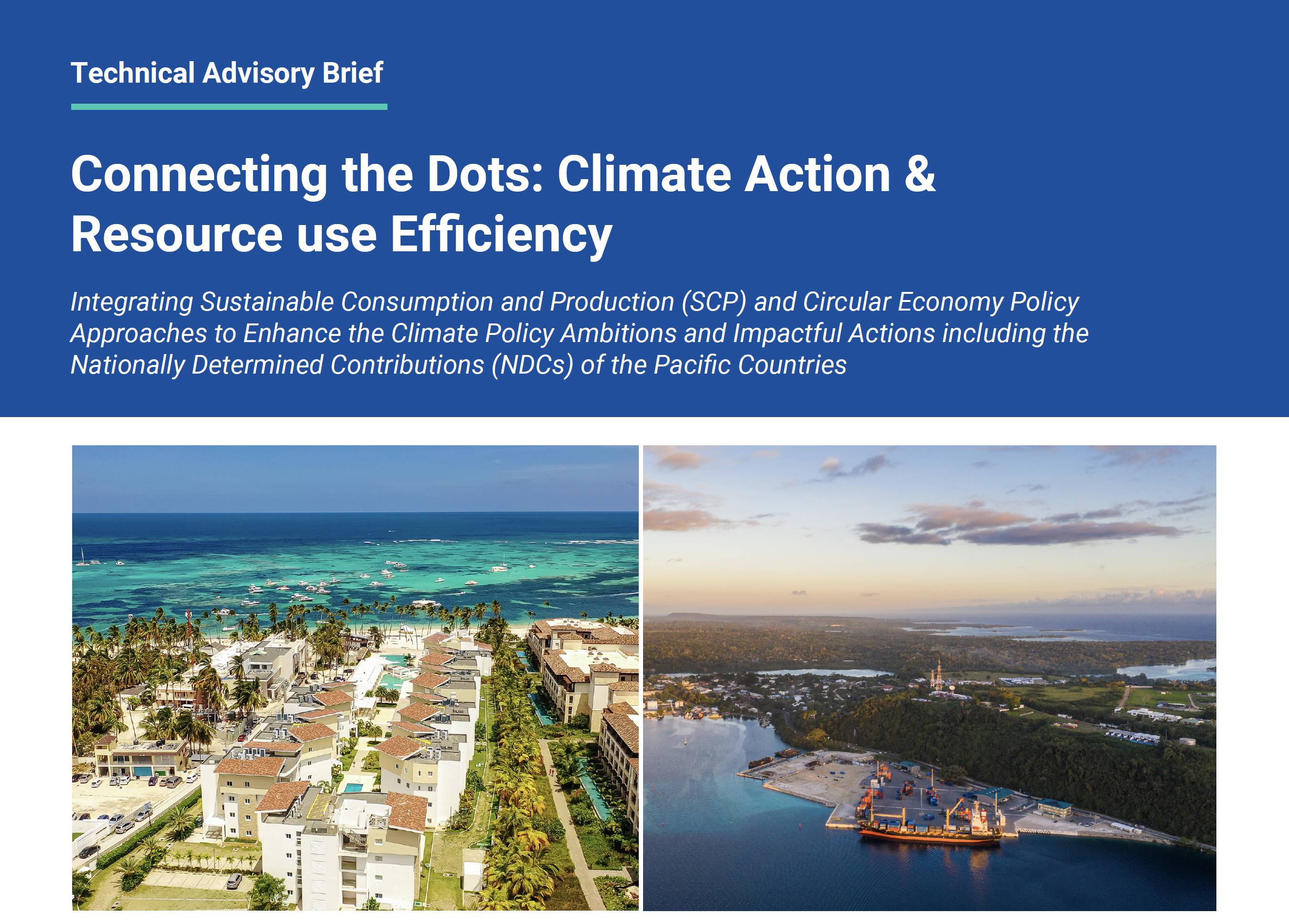
Location: Pacific region
Themes: SCP and Circular Economy Policy, Nationally Determined Contributions (NDCs), Resource Efficiency
The Challenge
Unsustainable patterns of consumption and production (SCP) are the root causes of the triple planetary crises of climate change, biodiversity loss, and pollution. It is widely accepted that minimisation and efficiency of resource use across supply chains of products and services can avoid a significant portion of global greenhouse gas emissions, both directly and indirectly. The SCP and Circular Economy offer significant opportunities for Pacific countries to meet their development challenges due to resource constraints and remoteness. Increasing material use efficiency provides opportunities to address these challenges while significantly contributing to climate action, as material production is a leading source of emissions. The current strategies adopted and endorsed by Pacific countries under several sectors and themes suggest that the importance of SCP and the circular economy has already been recognised. The Third Clean Pacific Roundtable organised by the Secretariat of the Pacific Regional Environment Programme (SPREP) in 2021 was dedicated to the Circular Economy, in which the member states acknowledged it as an imperative strategy for the region. The circular economy’s potential not only to reduce pollution and generate the necessary resources to manage waste but also to create new jobs and be an integral part of the Pacific’s commitment to reducing our climate footprint and remaining below the global 1.5-degree threshold has been reiterated there. The remoteness and challenging access to material resources in Pacific countries have posed a unique set of vulnerabilities. Therefore, resource efficiency is imperative to address these vulnerabilities and enhance the overall resilience levels of the Pacific region. On the other hand, these vulnerabilities have been amplified by the current and projected impacts of climate change. Amidst all these challenges, the Pacific countries have also demonstrated significant leadership in the global climate change policy sphere, including adopting the Paris Agreement, which is the current major driver of global collective climate actions. The Parties to the Paris Agreement are expected to submit their updated NDCs by the UNFCCC COP30 in 2025, and the Pacific countries have already called for ambitious NDC targets from all parties. The new NDC enhancement will be an opportunity for Pacific countries to streamline their national development priorities, including through material resource efficiency improvements.
Objectives
- Enhance the climate ambition of the Pacific Region with locally appropriate SCP and circular economy policies and actions.
- Capture the current experiences, engage stakeholders, and co-create policy options in SCP and circular economy to strengthen the climate ambitions, including those reflected through the NDCs and Long-term Low Emission Development Strategies (LT-LEDS).
Way Forward
- Conduct a rapid scoping and analysis of climate change policies including NDCs and the SCP priorities of the countries to identify the synergies and gaps among the policies of the climate change, material resource efficiency/SCP domains.
- Carry out multistakeholder consultations at regional/sub-regional and national levels, to identify the opportunities and potentials of SCP and CE policies and actions on climate mitigation and adaptation, in the transition pathway to resilience and sustainability.
- Co-create policy recommendations with the relevant national and regional stakeholders to amplify climate ambitions through impactful and locally appropriate SCP and CE policies and actions.
- Conduct a rapid scoping and analysis of climate change policies including NDCs and the SCP priorities of the countries to identify the synergies and gaps among the policies of the climate change, material resource efficiency/SCP domains.
- Carry out multistakeholder consultations at regional/sub-regional and national levels, to identify the opportunities and potentials of SCP and CE policies and actions on climate mitigation and adaptation, in the transition pathway to resilience and sustainability.
- Co-create policy recommendations with the relevant national and regional stakeholders to amplify climate ambitions through impactful and locally appropriate SCP and CE policies and actions.



